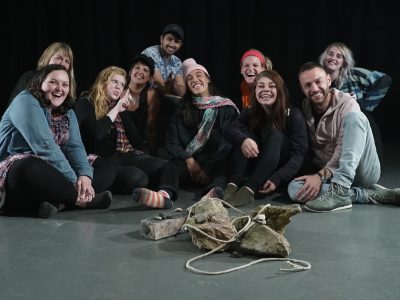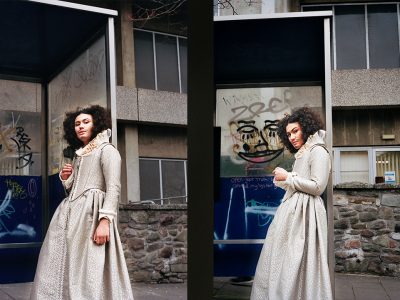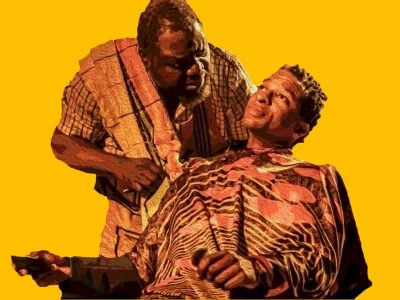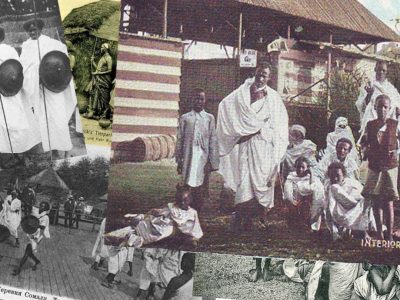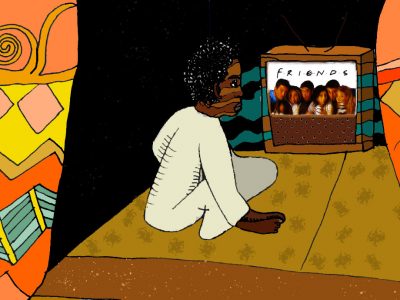Louder is Not Always Clearer: the untold story of being D/deaf in a hearing world
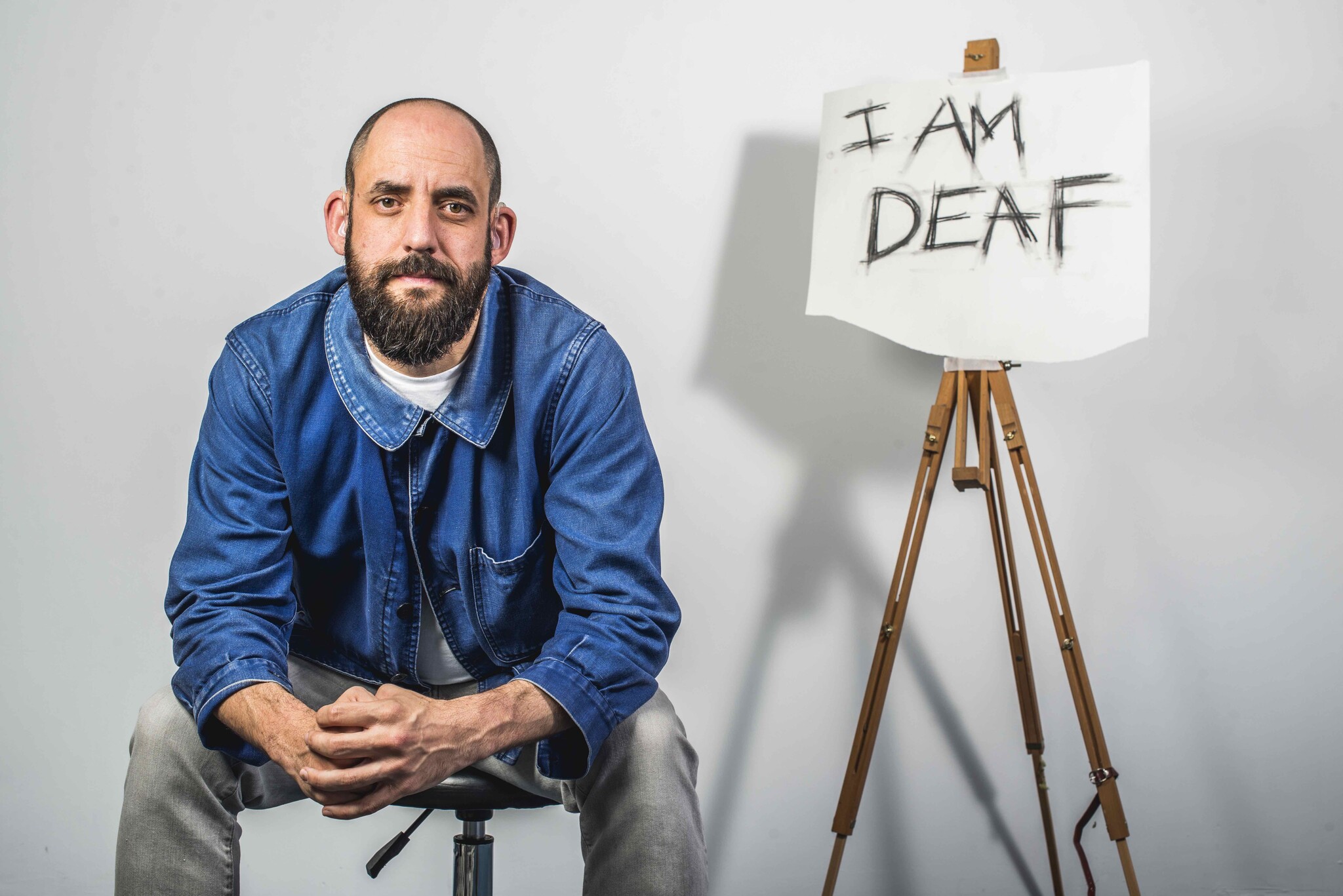
C/o Kirsten Mcternan
Jonny Cotsen, D/deaf performer and theatre maker talks to Asmaa on the importance of centring deafness in a hearing world.
Jonny Cotsen is a deaf performer, access consultant and deaf equality trainer who has recently performed his run of his multi-media show ‘Louder is Not Always Clearer’ – a powerful performance of his own personal journey with deafness – at the Bristol Old Vic. Asmaa spoke to Jonny about his show, being D/deaf, the impact of performing an autobiographical story, and his current project in development: the Hearing Hearing Aid (funded by disabled arts programme Unlimited).
What is ‘Louder is not always clearer’ about?
‘Louder is Not Always Clearer’ is an autobiographical journey of a deaf person trapped in a hearing world. Meet Jonny: he is a teacher, father and football fan. He’s an artist, a campaigner, and he’s deaf. He wishes he could sing and loves to dance, but he can’t hear the music unless the bass is turned right up. He grew up in a hearing family, surrounded by fear of the stigma of disability. ‘Louder Is Not Always Clearer’ tells a moving, funny story of disconnection, difference and desperation to belong. This is a one-man show which is a starkly honest portrayal of a man seemingly confident, outgoing and popular, who is inwardly vulnerable and, at times, isolated. ‘Louder Is Not Always Clearer’ focuses on the importance of connection with others and the struggle to do so effectively. In a hearing world Jonny is different and ‘Louder Is Not Always Clearer’ is a bold expose that highlights those differences. For a hearing audience it is an illuminating and emotional experience. For deaf audience members the show is a familiar tale of misunderstanding and isolation. For all audiences it’s a humorous and moving story of one man’s attempt to cope, to fit in and be accepted.
What was it like performing this run?
As always it had been quite difficult trying to reconnect with the story both emotionally and physically but my director Gareth Clark spent a long time helping me deal with emotional side of it because it is really important that the audience actually feels the vulnerability and the playfulness I have. He did a really good job – I felt this time round much more confident and at ease when performing on the stage.

‘Louder is not always Clearer’ c/o Noel Le Conte
I like the way that in parts of the show, you signed and didn’t translate for the hearing audience – was that important for you?
This was massively important to me and I believe it’s one of the pivotal parts of the show. Deaf people are surrounded by people who speak and if communication becomes a problem then it becomes a barrier, so I wanted to reflect that to an hearing audience where they can feel disconnected and ‘lost’. There is something really beautiful in watching them being not really sure of what is going on and to be able to have a conversation with audience members that can sign is really overpowering because they have a voice too. Sign language is a beautiful language that needs to be shared widely.
Is there anyone you made this piece ‘for’? Are there any communities you particularly wanted to see this?
The show is really for a hearing community to have a greater understanding, but having my mother being involved in this really opened doors to our relationship between us because it feels like she had been carrying a burden all her life – whether she made the right decision or not in regards if I should be speaking or signing. Recently after a show she told me that she wants to learn sign language and she wants to have that connection with me and other mothers that have deaf children. I know it must be hard for her to say that, but I think she really means it. I also know that mums with deaf children have really connected with the show.
This piece was autobiographical – what was it like creating something so personal?
It was difficult to try and reconnect with my past. I had intensive speech therapy for over 20 years and it was traumatising so I don’t always like to think about it. I’d have much rather been playing with my friends rather than speaking difficult words to a balloon! It was something that I did not want to be reminded of, but the director wanted to use elements of that vulnerability in the performance. It was important that the audience comes on that journey with me.
Do you ever get any unexpected reactions from the audience?
One performance at Chapter in Cardiff, two women came on stage and gave me a massive hug. While it was so lovely I had to remind them that the play hadn’t finished! It’s these moments that I love and I often get big hugs especially from mums who have deaf children. They can feel this through my mum. I love that it stayed with the audience after the show and some of the conversations that I have had have been quite emotional.
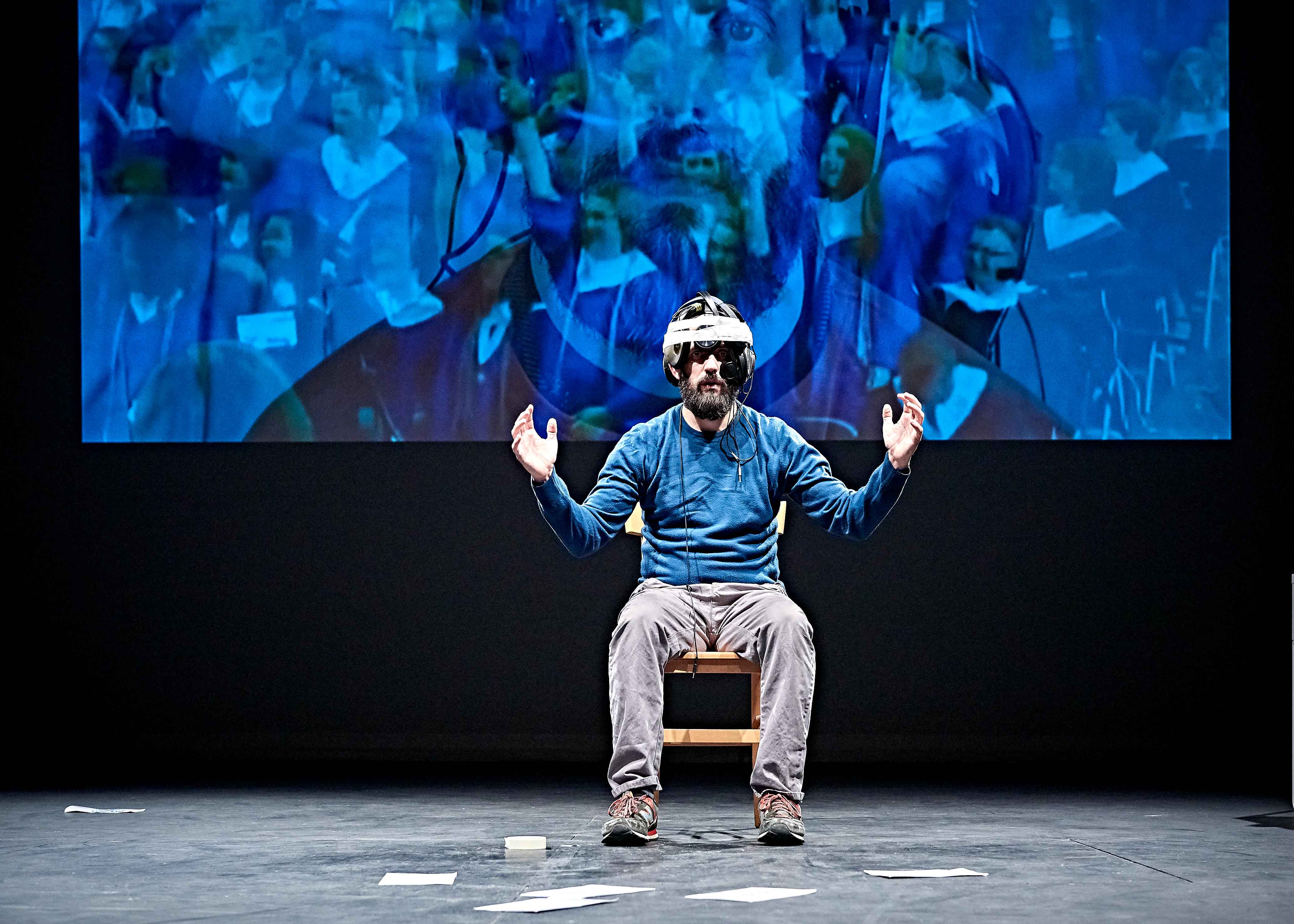
‘Louder is not always clearer’ c/o Noel Le Conte
Why do you think theatre is the best way to tell this story?
Theatre is there to have a conversation and that was my main objective. I wanted to reach out to people that do not usually go to see plays to feel they were in a safe place so it was important to me that the show was accessible to everyone. It was lovely to see lots of deaf people watching the show because they need a role model… something that I have never had. A deaf role model.
What is the Hearing Hearing Aid (or HHA)?
The HHA is almost a response to ‘Louder Is Not Always Clearer’. The purpose of HHA is to create an empathetic piece that will provide people with the opportunity to reflect on how they listen and engage in their everyday world. The project will enable the audience to reflect on how they listen and what they hear. The art of truly listening to someone doesn’t necessarily mean hearing them. Just because someone can hear you, doesn’t mean to say they’re listening. The Hearing Hearing Aid is an immersive project which uses your senses and technology to explore how you communicate and engage with others. It is a fun, playful piece where you will feel something… and what that will be is up to you. How will you know if you are listening? The HHA will be designed so that the audience will have to ‘listen’ instead of ‘hear’ by really looking a people’s faces to truly listen to what they are saying. If they don’t look at the face the dialogue will be ‘lost’. I think it will be a very unique, intimate, and immersive experience.
How has working with the Pervasive Media Studio helped shape your work?
Working in the PM Studio has been a great source of inspiration for me. I have never been involved in a co-working space where there is a sense of a community and how people are so open to share and connect. The HHA would never have existed if I was not an artist in residence through the new talent residency and I am forever grateful for the support and advice during my time there. My only regret is that I wished I lived a bit closer to the studios!
Learn more about Pervasive Media Studio here – it’s a totally free space for artists to come and learn how they can use tech in their work, and you can read about joining here. Weekly Lunchtime Talks on Fridays are also open to everybody. The next one is from awesome Studio resident and chef Jasmine Creusson – come along and work in the studio all afternoon from 1pm, free, as part of Open Studio Fridays.
Want to tell us something? Find us on Twitter, Facebook or Instagram.

